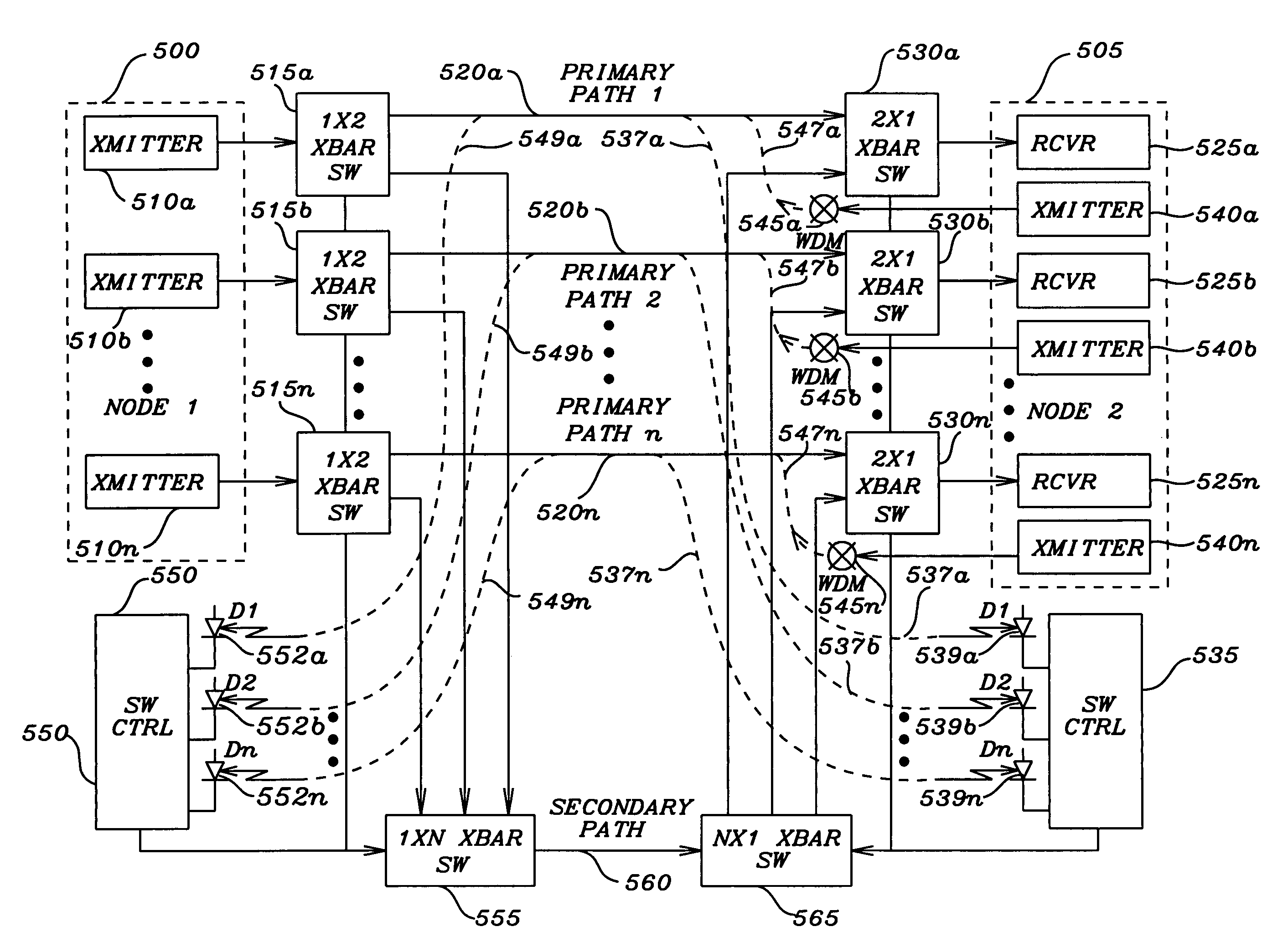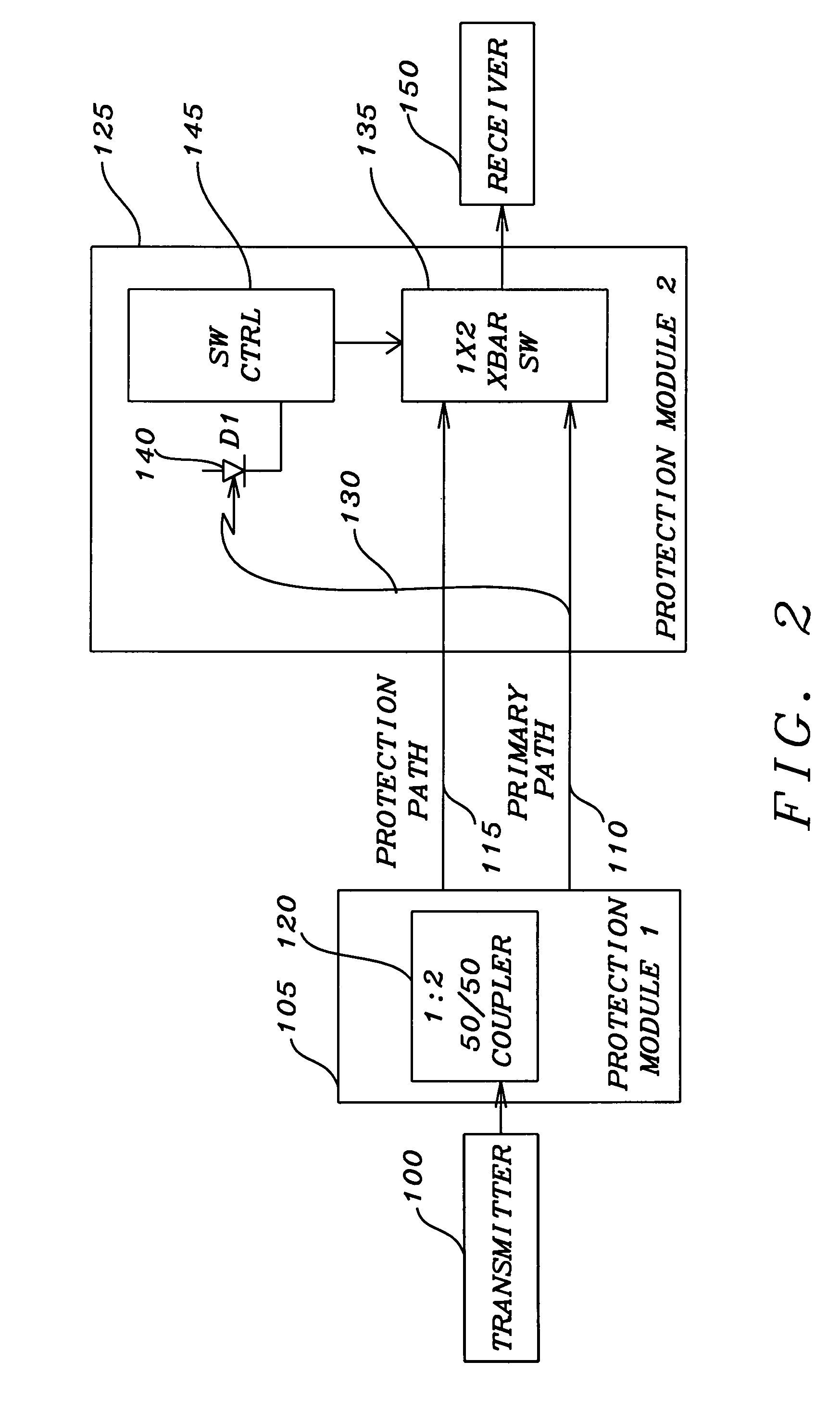Fiber optic link protection apparatus
a fiber optic link and protection device technology, applied in the field of optical communication networks, can solve problems such as reducing the performance of the network
- Summary
- Abstract
- Description
- Claims
- Application Information
AI Technical Summary
Benefits of technology
Problems solved by technology
Method used
Image
Examples
first embodiment
[0036]an optical link between two nodes of a network is shown in FIG. 2. A first node has a transmitter 100 that is to convey the optical signal from the first node. The output of the transmitter 100 is connected to a first protection module 105. The first protection module 105 has an optical coupler that divides the optical signal into equal portions that are to be conveyed on the primary optical transmission path 110 and the protection optical transmission path 115. The primary optical transmission path 110 and the protection optical transmission path 115 are connected to the second protection module 125, which in turn is connected to the receiver 150 of a second node. The primary optical transmission path 110 and the protection optical transmission path 115 are connected to the two input / one output crossbar switch 135 of the second protection module 125. The output of the crossbar switch 135 is connected to the receiver 150 of the second node. The optical signal present on the pr...
second embodiment
[0049]FIG. 4b illustrates this structure employing a return transmitter and wave domain multiplexer. The fundamental structure of the fiber optic link of FIG. 4b is essentially identical to that of FIG. 4a, except the wave domain multiplexer 340 is now connected to the primary optical transmission path 315 through the tap 345. The transmitter 309 transmits a constant optical signal that does not need to contain any message, but may be modulated for power conservation purposes. The tap 325 is now in the primary optical transmission path 315 rather than the secondary optical transmission path 320 as in FIG. 4a. The constant optical sense signal impinges on the photodiode 312 to create a sense current that is transferred to the switch control circuit 313. If the constant optical sense signal is functioning indicating that there is no fault in the primary optical transmission path 315, the switch control circuit 313 generates a control signal that is communicated to the crossbar switch ...
PUM
 Login to View More
Login to View More Abstract
Description
Claims
Application Information
 Login to View More
Login to View More - R&D
- Intellectual Property
- Life Sciences
- Materials
- Tech Scout
- Unparalleled Data Quality
- Higher Quality Content
- 60% Fewer Hallucinations
Browse by: Latest US Patents, China's latest patents, Technical Efficacy Thesaurus, Application Domain, Technology Topic, Popular Technical Reports.
© 2025 PatSnap. All rights reserved.Legal|Privacy policy|Modern Slavery Act Transparency Statement|Sitemap|About US| Contact US: help@patsnap.com



